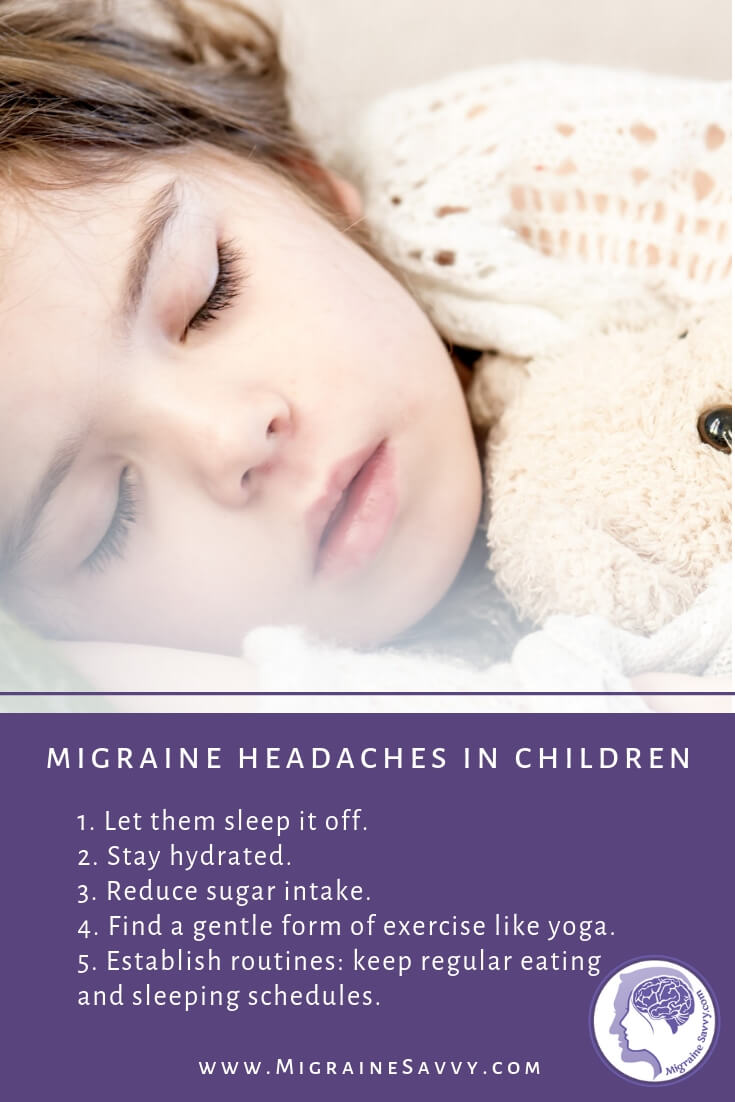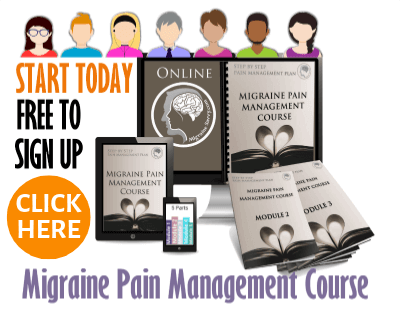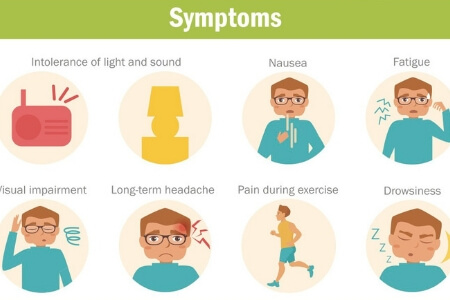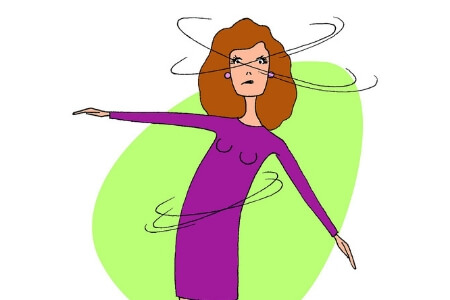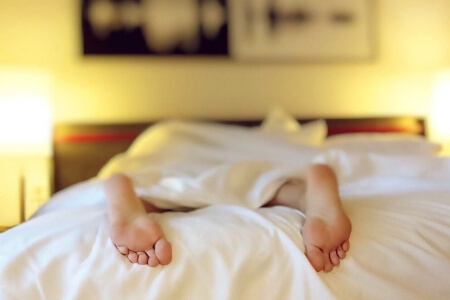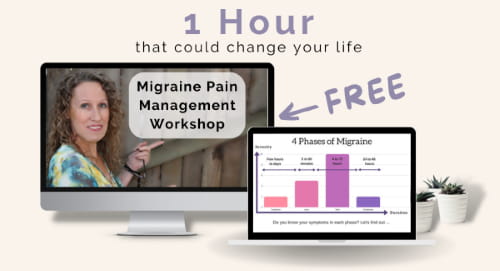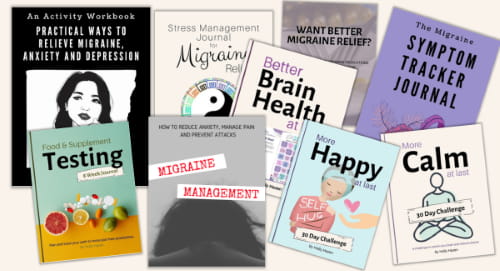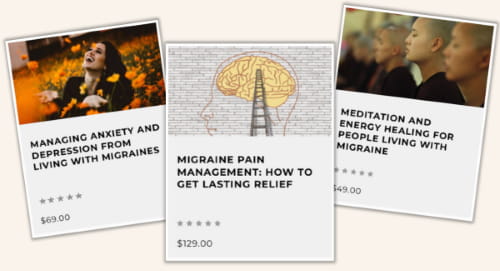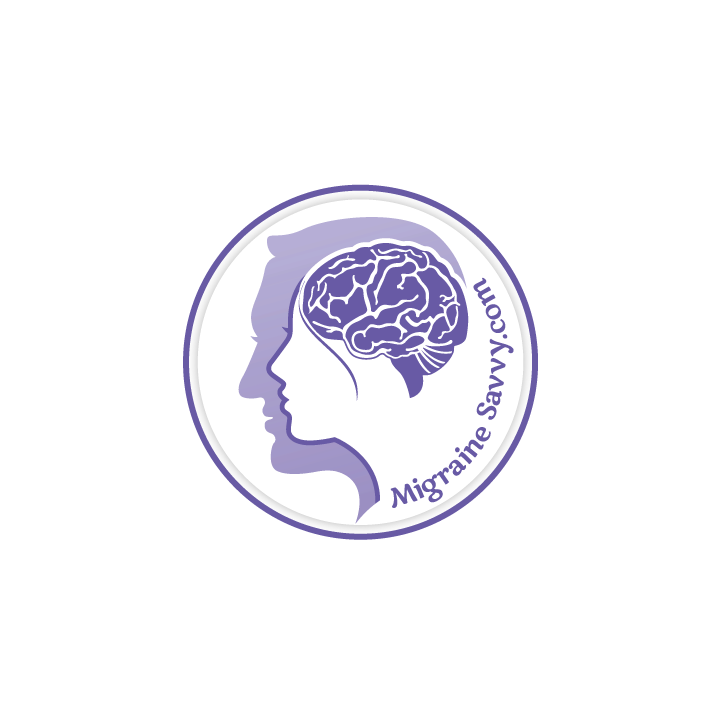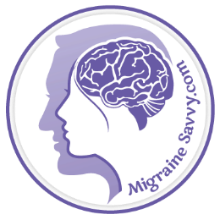- Home
- Migraine Symptoms
- Migraine Symptoms in Children
Magnesium Deficient = More Migraine Attacks
Science confirms this hidden trigger.
Get all 7 forms your body actually absorbs in one bottle.
🎁Save 10% with my code!
Magnesium Deficient = More Migraine Attacks
Science confirms this hidden trigger. Get all 7 forms your body actually absorbs in one bottle +
🎁Save 10% with my code!
Migraine Symptoms In Children: How They Differ To Adults
Types | Symptoms | Preverbal | Triggers | Treatments | Sleep | What You Can Do Now
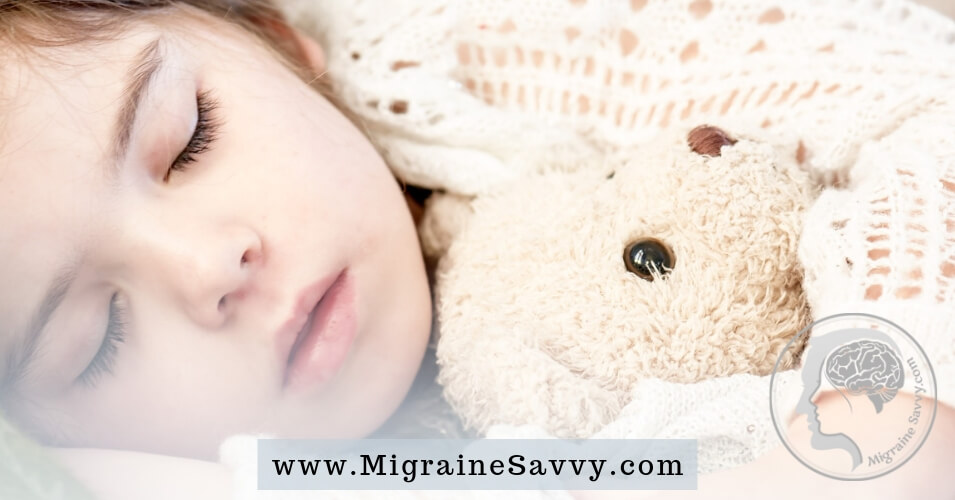 Migraine symptoms in children are much shorter in duration.
Migraine symptoms in children are much shorter in duration.
Migraine symptoms in children are a lot different to symptoms in adults. For one, they are much shorter in duration.
Babies and toddlers can get migraines, especially if one or both parents have a history of migraines themselves, or have a family history of migraines.
In babies and toddlers, the headaches can be caused by infections.
Ask yourself this next time you see a baby hitting their head against the crib.
Puberty, however, is the most typical time for symptoms to start causing problems like migraines in children.
The changes in hormones, for which we have no control over, can wreak havoc for teenagers.
Types of Migraines Kids Have Are Different
- Exertion migraines – from physical activity
- Menstrual / hormonal migraines – in teenage girls
These four are rare, but they are also found in children:
- Cluster headaches – severe one-sided pain located around the eye that last approximately 30 minutes. A runny nose and tearing up in the one eye is common.
- Severe migraines like - Basilar migraines;
- Hemiplegic migraines; and
- Ophthalmoplegic migraines.
Their Symptoms Are Different Compared to Adults
MIGRAINE SYMPTOMS IN CHILDREN
• Throbbing or dull pain on one or both sides of the head, typically across the forehead (adults are most typically one sided)
• Can be accompanied by nausea leading to vomiting, but more typically is not
• Stomach ache
• Pain typically lasts one to three hours
• Loss of appetite
• Fatigue
• Irritability
• Pale appearance
• Glassy eyes
• Food cravings
• Dizziness
• Diarrhea
• Fever
• Often NO noise or light sensitivities, but they can occur
• Visual disturbances (flashing lights or tunnel vision) aka aura
Adult symptoms are typically one sided pain, they get cold hands and feet, and rarely get stomach ache or a pale appearance like kids do. They can last for days.
The migraine symptoms in children that are different: pain can be on both sides of the head, the stomach ache and dizziness are common migraine symptoms in children, they can faint. They are significantly shorter in duration.
Some children can experience symptoms that are scary. These can be distressing migraine symptoms in children:
- Sensory changes that happen right before the pain phase (headache). They can lose part of their vision, be sensitive to light, sound and smell.
- Fainting (basilar migraine)
- Tingling around the face and arms (hemiplegic migraine)
- Sudden confusion and feeling disorientated (acute confusional migraine). [5]
If They Can't Talk Yet - Get Them to Draw
It's really good to get your child to draw the headache if they are a little lost for words or are too young to talk (preverbal).
According to Dr. Paul Holinger preverbal babies and infants use nine signals to express their needs, fears, feelings and desires. These signals (excitement, joy, surprise, distress, anger, fear, shame, disgust and dissmell) are communicated through facial expressions, vocalizations and gesture. [4]
So when you detect those signals, talk with
your child about the picture. Ask questions.
This will help you both form your own vocabulary to use around the pain and its description.
Take the picture to the doctor with you to assist in getting the right
diagnosis.
Factors That Trigger Migraines in Children
Before the age of 10 boys get more migraines than girls. After puberty girls get more migraines than boys.
Boys have more headaches than girls before puberty. After puberty girls tend to get more migraines, and some kids are even lucky enough to outgrow them. Ah but to dream!
Food triggers have also been connected to “join ranks with hormones and cause a migraine”.
Here are the most obvious ones:
- Caffeine and food
- Sugary foods
- Skipped meals, cravings or loss of appetite
- Food allergies
Also external factors like:
- Too much physical exertion
- Anxiety, stress or excitement
- Disturbed and erratic sleep patterns – getting too much or too little sleep.
Migraines for Dummies says that half of migraines in children are from fever, virus and infections. So this means that the migraine will disappear when your doctor treats the infection or mumps, measles, ear infection, etc.
The other half is linked to physical over exertion and the menstruation cycle in teenage girls. If it’s not that simple, and they recur, then you and your doctor can consider a treatment program and drug therapy.
Other environmental allergies and foods are common migraine triggers that will need to be avoided. Watch for: asthma, chronic ear infections, rashes or hives, runny nose, sneezing, sinusitis, and sore throats.
Using a journal is the easiest way to keep track of your
child’s triggers and discover if there are any patterns involved.
My #1 Choice in Magnesium Supplementation
Treatments for Migraine Symptoms in Children
Take medications at the earliest sign an attack is on its way. The faster you can act the more effectively you can stop the migraine symptoms from escalating in your son or daughter.
The most effective migraine abortive medication has now been approved for the use in childhood migraines.
- Maxalt® (Rizatriptan) was officially approved by the FDA for use in children that are 6 years old and older.
- Axert® (Almotriptan malate) was also approved for children from the age of 12 and up.
This is great news for moms and dads with children who suffer with migraine attacks.
Besides the newly approved abortive medications, there are a lot of things you can do to lessen migraine symptoms in children, thus reducing pain and discomfort.
An ice pack and being tucked into bed might be the very first thing to do.
There are home remedies for a natural approach:
- I highly recommend finding a triptan that works if your child is over 6 years old, and then
- Trying ice and heat therapy and biofeedback devices. Especially if they are too young for abortive medications or
- Daily prophylactic medications.
Here is a great progressive muscle relaxation technique that is very effective to reduce migraine symptoms in children. Plus... you can use this for the next bit...
It's OK to Let Them Sleep It Off
Regardless of your child's age, migraines usually get better or go away altogether with sleep. [5]
According to numerous doctors and websites, migraines in children are most commonly and most often totally relieved by deep sleep.
According to Migraines for Dummies if your child does not get relief or cannot sleep off the pain, your options are over the counter (OTC) medications, and if they do not provide relief the next step is prescription drugs.
If your child experiences nausea and vomiting, you may need to consider the rectal suppositories for migraines, by prescription only.
Finding the right treatment is crucial to help your son or daughter learn to manage their headache episodes in order to also find enjoyment in everyday life.
Their lives will be more disrupted than normal kids, and they may get upset about this fact. Learning how to deal with missing soccer games, or piano practice will be part of what you will need to teach them in order to manage their condition.
As a parent, you, your child and your doctor must discover the triggers to avoid, find the most immediate and effective pain relief and consider taking preventative prophylactic drugs for childhood migraines on a regular basis to deal with the condition.
What You Can Do Now
There is not much we can do about our hormones changing, so let’s look at what you can do to help with reducing migraine symptoms in children. You can make sure your child is warming up before they exercise, and staying hydrated during any activity.
It is OK to take acetaminophen or ibuprofen before the activity or to find a more gentle form of exercise, like walking, yoga, Tai chi, or cycling instead of the overexertion of say soccer.
Keep a regular eating and sleep routine. Make healthy lifestyle choices. Avoid caffeinated and sugary drinks and make sure he/she is getting 8 to 9 hours of sleep each and every night. Our sleep is SO important.
You may need to alter this sleep pattern, especially if too much or too little sleep becomes a trigger. It is best to wake up and go to bed at the same times in order for form a routine. Even on weekends.
Talk with your child about emotional health, and teach him or her to deal with everyday stresses that arise, along with the disruptions that migraines will inevitably bring.
Use our migraine journal or migraine diary and see the list below for other areas you can print off forms that might help. You may also want to address excitement as that can also become a migraine trigger.
You already know this one, but reduce their sugar intake. Even too much fruit can cause a sugar overload and then a crash.
You might like to read to them while they rest, if they can tolerate sound.
More planning and better self-care... you can do that
Dealing with migraines Is difficult and you may have to make some big changes in lifestyle.
About 65 - 80% of children with migraines interrupt their normal activities because of their symptoms. In one study of 970,000 self-reported migraineurs aged 6-18 years - 329,000 school days were lost per month." [3]
Migraine is often considered to be a harmless condition, but the
truth is that they cause, not only a lot of physical pain and suffering,
but also a lot of
emotional side effects
and pain that disrupt the flow of everyday.
There are ways to improve the quality of your child’s life despite having migraines. He or she can still be an active participant in their own life.
It might just take a little more planning and self care than originally thought. You can do that.
WANT MORE TIPS? Subscribe to my newsletter and follow along on Facebook and Pinterest for all of the latest updates.
MIGRAINE SYMPTOMS Related Articles
How to be more MIGRAINE SAVVY right now...
Migraine Symptoms in Children References:
1. Lance, Dr. James W. (1993)
Migraines and Other Headaches. Compass Publishing Co. Pty. Limited, Australia. p. 46.
2. Stafford, D. and Shoquist, J. MD. (2003) Migraines for Dummies. Wiley Publishing, Inc: New York. pp. 241-260.
3. Dr. Senelick at Webmd.com (2010) Migraines in Children. [Online], Available at: http://www.webmd.com/migraines-headaches/migraines-in-children. Accessed Jul 2016.
4. Holinger, Paul C. M.D. (2012) Before Children Talk... They Understand a Lot! Available [online} at: https://www.psychologytoday.com/us/blog/great-kids-great-parents/201201/children-talk-they-understand-lot
5. The Royal Children's Hospital Melbourne (2018) Migraine headache. Available [online] at: https://www.rch.org.au/kidsinfo/fact_sheets/migraine_headache/ Accessed Mar. 13, 2019

